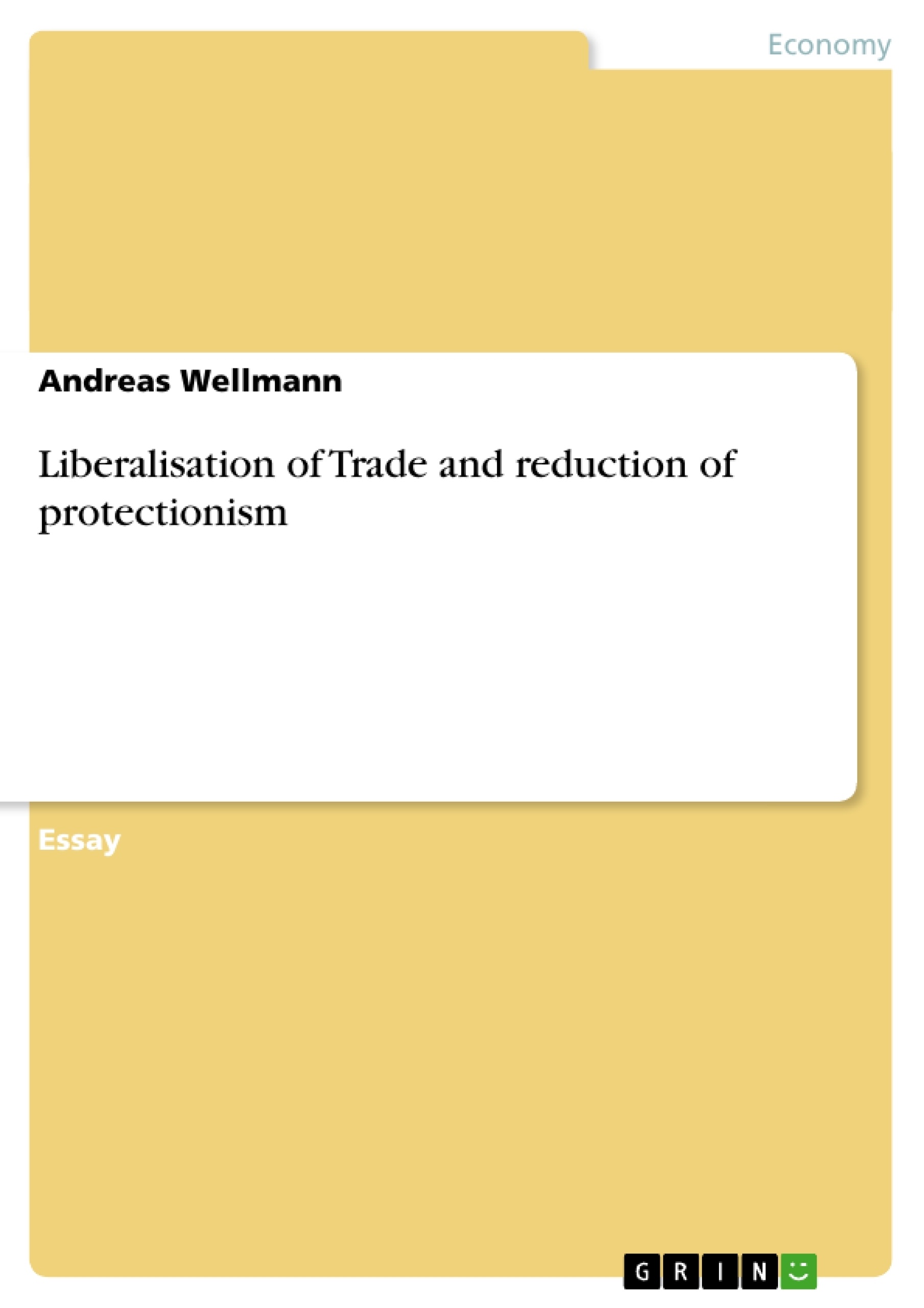International trade has increased from $2 trillion in 1985 to over $ 6.4 trillion in 2002.1 This impressive growth is primarily the consequence of various political and technological developments of the past 15 years. The political raise of Russia and Asia, particularly China, has extended the worldwide markets. At the same time, technological changes like the Internet have decreased information asymmetry and lowered costs for logistic services, which facilitated the development of international trade. Moreover, organisations like the World Trade Organisation (WTO) have helped to liberalize and deregulate worldwide markets. Today, all aspects of a nation’s economy are closely correlated to the economies of its trading partners. The world has become a ‘village’ and market players are able to interact and transact around the world within ‘real time’ (Carbaugh 2002). [...]
Inhaltsverzeichnis (Table of Contents)
- Compare and contrast the arguments for and against the greater liberalisation of international trade and reduction of protectionism.
- Advantages of greater liberalisation of international trade
- Disadvantages of greater liberalisation of international trade
Zielsetzung und Themenschwerpunkte (Objectives and Key Themes)
This assignment aims to compare and contrast the arguments for and against the greater liberalization of international trade and reduction of protectionism. The paper examines the economic benefits and drawbacks of free trade, focusing on the impact on both developed and developing nations.
- The economic benefits of free trade, including increased productivity, specialization, and innovation.
- The potential drawbacks of free trade, such as the exploitation of developing countries and job losses in industrialized nations.
- The role of protectionist measures in mitigating the negative effects of free trade.
- The impact of free trade on income distribution and the potential for wage reductions in industrialized countries.
- The challenges of balancing the benefits of free trade with the need to protect domestic industries.
Zusammenfassung der Kapitel (Chapter Summaries)
- The first chapter introduces the concept of international trade liberalization and its impact on global markets. It discusses the economic theories of absolute and comparative advantage, highlighting the benefits of specialization and free trade.
- The second chapter examines the arguments in favor of greater international trade liberalization, including increased productivity, economies of scale, and enhanced competition. It also explores the positive effects of trade on consumer welfare, economic growth, and international cooperation.
- The third chapter delves into the arguments against greater international trade liberalization. It focuses on the potential negative consequences for developing countries, the threat to domestic industries, and the impact on income distribution. The chapter also discusses the role of protectionist measures in mitigating these negative effects.
Schlüsselwörter (Keywords)
Key terms and concepts explored in this assignment include: international trade liberalization, protectionism, absolute advantage, comparative advantage, economies of scale, specialization, innovation, income distribution, developing countries, domestic industries, and trade agreements. The assignment examines the economic implications of free trade, highlighting the benefits and drawbacks for both developed and developing nations.
- Quote paper
- Andreas Wellmann (Author), 2004, Liberalisation of Trade and reduction of protectionism, Munich, GRIN Verlag, https://www.grin.com/document/22181



